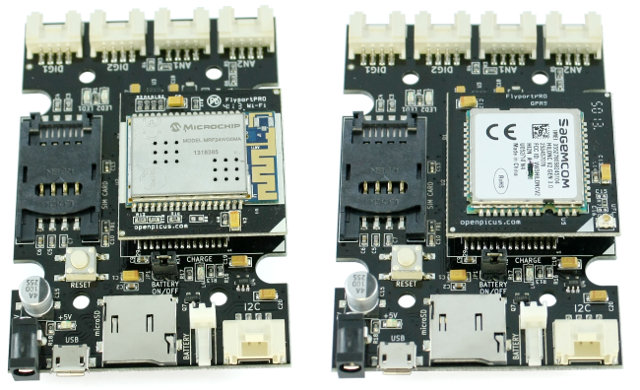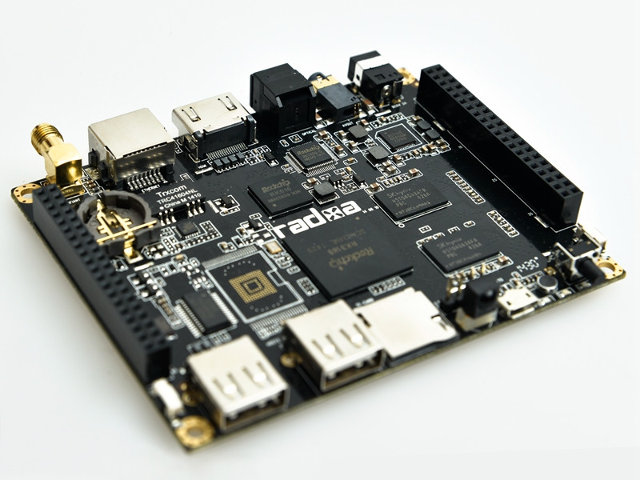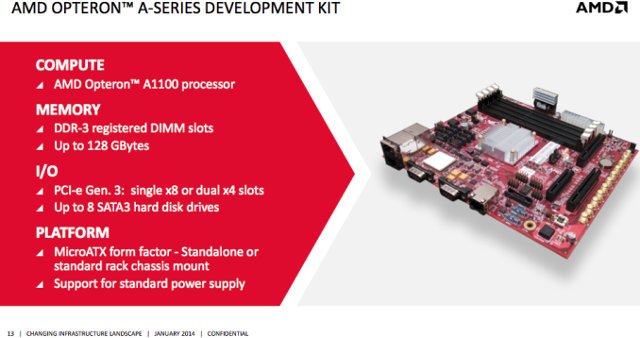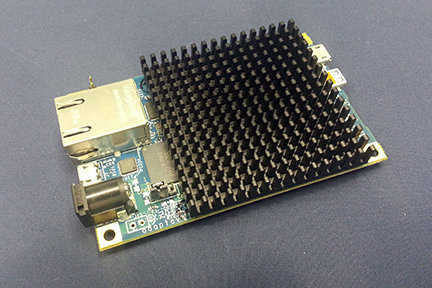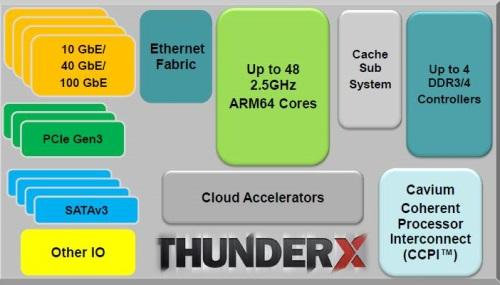Linus Torvalds announced the release of Linux Kernel 3.17 on Sunday: So the past week was fairly calm, and so I have no qualms about releasing 3.17 on the normal schedule (as opposed to the optimistic “maybe I can release it one week early” schedule that was not to be). However, I now have travel coming up – something I hoped to avoid when I was hoping for releasing early. Which means that while 3.17 is out, I’m not going to be merging stuff very actively next week, and the week after that is LinuxCon EU… What that means is that depending on how you want to see it, the 3.18 merge window will either be three weeks, or alternatively just have a rather slow start. I don’t mind getting pull requests starting now (in fact, I have a couple already pending in my inbox), but I likely won’t start processing […]
openPicus Introduces Wi-Fi and GPRS IoT Kits Powered by Microchip PIC24 MCU
openPicus has launched two new development kits for the Internet of Things with either Wi-Fi or GPRS connectivity, based on their FlyportPRO modules featuring a 16-bit Microchip PIC24 MCU, and sharing the same baseboard. These kits can be used as a Web server with firmware update over the air (FOTA) (Wi-Fi version only) among other things, and support TCP, UDP, FTP, & HTTP protocols, as well as MQTT (Message Queue Telemetry Transport), a light weight messaging protocol running on top of the TCP/IP protocol, used when a small code footprint is required and/or network bandwidth is limited. openPicus FlyportPRO Wi-Fi and GPRS modules share mostly the same specifications: MCU – Microchip PIC24FJ256GB206 16-bit MCU @ 32 MHz with 256KB Flash, 96KB RAM External Storage – 16Mbit Flash memory (for FOTA), 64Kbit EEPROM Connectivity GPRS Module – SAGEM HILONC GPRS Transceiver (quad band: 850, 900, 1800, 1900 MHz) with uFL connector for external […]
The New Radxa Rock Lite Rockchip RK3188 Development Board Sells for $59
You may have heard about Radxa Rock Lite development board before, so let’s clear up the different versions of the Radxa Rock first. There’s a total of four Radxa Rock models: Radxa Rock (2013) – The original version with 2GB RAM, 8GB NAND Flash, and Wi-Fi/Bluetooth Radxa Rock Lite (2013) – 1GB RAM, 4GB NAND Flash, and Wi-Fi only Radxa Rock Pro (2014) – An evolution of the Radxa Rock still with 2GB RAM, 8GB NAND flash, Wi-Fi/Bluetooth but adding LVDS and camera interfaces. Radxa Rock Lite (2014) – 1GB RAM, no NAND flash, and Wi-Fi only The fist two versions appear to have been phased out, as they are not listed for sale on Radxa Rock website, and today, I’ll write about Radxa Rock Lite (2014). Radxa Rock Lite (2014) specifications: SoC – Rockchip RK3188 ARM Cortex-A9 quad core @ 1.6Ghz + Mali-400 MP4 GPU System Memory – 1GB […]
AMD Announces Availability of their $3,000 Opteron A1100-Series 64-bit ARM Development Kit
AMD Opteron A1100 Server SoCs, codenamed “Seattle”, come with four to eight ARM Cortex A57 cores, and earlier this year, the company unveiled both the processors and a development kit. You can now apply for “AMD Opteron A1100 Series 64-bit ARM developers kit”, and if you’re selected, you’ll “just” need to pay $2,999 to receive the board and related tools. The kit targets software and hardware developers, as well as early adopters in large datacenters. AMD Opteron A1100 Board hardware specifications: SoC – ARM Opeteron A1000 with 4 ARM Cortex-A57 cores System Memory – 2x Registered DIMM with 16 GB of DDR3 DRAM (upgradeable to 128GB) Storage – 8 Serial-ATA connectors Connectivity – Not mentioned, but there seems to be an RJ45 port on the pic, and another SFP cage, both probably 10 Gbit Ethernet since it’s the speed supported by Opteron A1100. Expansion slots – PCI Express connectors configurable […]
Adapteva Announces Three Parallella Fanless Boards for Microserver, Desktop, and Embedded Applications
Adapteva’s Parallella low cost open source hardware “supercomputer” is a board powered by Xilinx Zynq-7010/7020 dual core Cortex A9 + FPGA SoC and the company’s Ephipany epiphany coprocessor, that’s had a successful Kickstarter campaign in 2012 as the 16-core version sold for just $99, and is capable of handling applications such as image and video processing, and ray-tracing, and also comes with an OpenCL SDK. The board was fairly difficult to source after the crowdfunding campaign, and one the common complain of backers was the board had to be actively cooled by a fan. The company has fixed both issues by increasing slightly the price, and redesigning the board so that it can be passively cooled by a larger heatsink. There are now three versions of the parallela board: Parallella Microserver ($119) – Used as an Ethernet connected headless server Parallella Desktop ($149) – Used as a personal computer Parallella […]
64-bit ARM Server Motherboards by SoftIron
We’ve already seen development board such as X-Gene XC-1, and 64-bit ARM servers have been demonstrated by Dell and HP, but SoftIron, a British startup, claims to be the first to provide a production ready ARMv8 solutions for the enterprise server market (e.g. data centers), with its SoftIron 64-0400 and 64-0800 server motherboards powered by Applied Micro X-Gene quad and octa SoC. Although the company did not release complete pictures of the board, they seem to have done a better job with specifications: SoC SoftIron 64-0400 – Applied Micro X-Gene APM883204 with 4x 64-bit ARMv8 cores @ 2.4 GHz, 4x 32-bit ARMv5 cores for Network/Security offloads and Acceleration, and 1x Cortex M3 for server management SoftIron 64-0800 – Applied Micro X-Gene APM883208 with 8x 64-bit ARMv8 cores @ 2.4 GHz, 4x 32-bit ARMv5 cores for Network/Security offloads and Acceleration, and 1x Cortex M3 for server management System Memory – Up […]
Cavium ThunderX Server SoC Features up to 48 ARM 64-bit Cores
ARM SBSA specification for server supports up to 268,435,456 CPU cores for the second level of standardization on one or a combination of SoCs. We’re not quite up there just yet, but Cavium ThunderX is an ARM server SoC with up to 48 cores on a single chip, which is the highest number of cores I’ve ever heard of in an ARM SoC. The company created their own custom processor cores using an ARMv8 architecture license, designing an SoC complies with ARM’s Server Base System Architecture (SBSA) standard with the following key features: ARM based SoC that scales up from 8 to 48 cores with up to 2.5 GHz core frequency with 78K I-Cache, 32K D-Cache, and 16MB L2 cache. Fully cache coherent across dual sockets using Cavium Coherent Processor Interconnect (CCPI) Integrated I/O capacity with 100s of Gigabits of I/O bandwidth 4x DDR3/4 72-bit memory controllers supporting up to 1TB RAM […]
Prpl Non-Profit Organization to Work on Linux, Android, and OpenWRT for MIPS based Processors
In what looks like an answer, albeit fairly late, to Linaro, the non-profit organization working on open source software for ARM based SoCs, a consortium of companies composed of Imagination Technologies, Broadcom, Cavium, Lantiq, Qualcomm, Ingenic, and a few others, has funded Prpl (pronounced Purple), “an open-source, community-driven, collaborative, non-profit foundation targeting and supporting the MIPS architecture—and open to others—with a focus on enabling next-generation datacenter-to-device portable software and virtualized architectures”. The Prpl foundation will focus on three key objectives: Portability – To create ISA agnostic software for rapid deployment across multiple architecture Virtualization & security – To enable multi-tenant, secure, software, environments in datacenter, networking & storage, home, mobile and embedded Heterogeneous Computing – To leverage compute resources enabling next generation big data analytics and mining Initially there will PEG (Prpl Engineering Group) to take of the following projects for 4 market segments (datacenter, network & storage, connected consumers, […]



